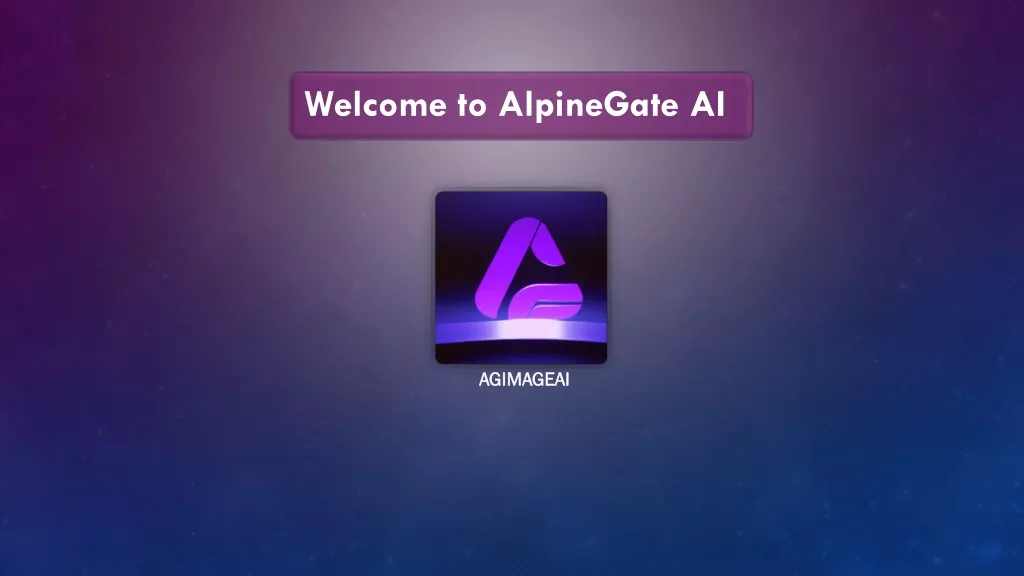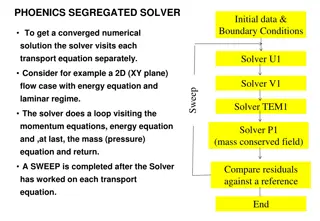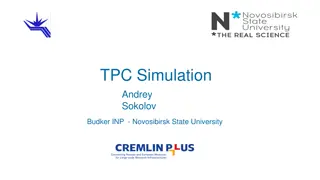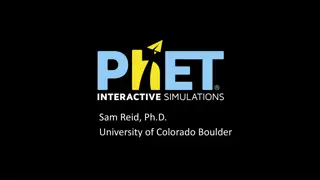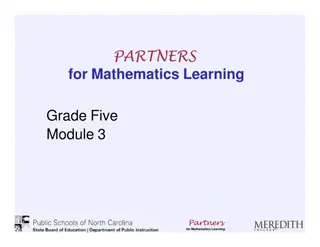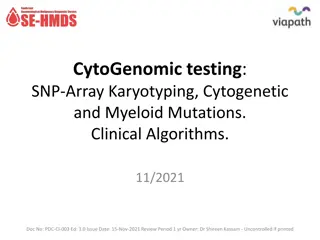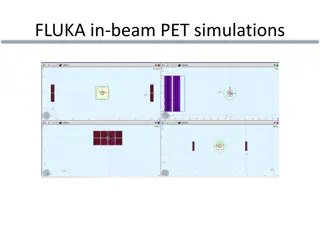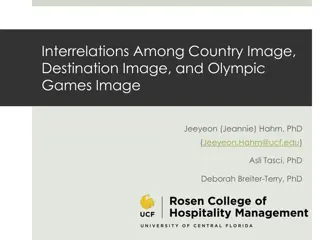SkySurf Image Simulations for Testing Fidelity of Measurement Algorithms
This project explores the creation of simulated images for testing the accuracy of sky background measurement algorithms used in the SKYSURF database. The simulations aim to mimic the characteristics of images captured by the Hubble Space Telescope, providing valuable insights into cosmic phenomena such as star and planet formation.
Download Presentation

Please find below an Image/Link to download the presentation.
The content on the website is provided AS IS for your information and personal use only. It may not be sold, licensed, or shared on other websites without obtaining consent from the author.If you encounter any issues during the download, it is possible that the publisher has removed the file from their server.
You are allowed to download the files provided on this website for personal or commercial use, subject to the condition that they are used lawfully. All files are the property of their respective owners.
The content on the website is provided AS IS for your information and personal use only. It may not be sold, licensed, or shared on other websites without obtaining consent from the author.
E N D
Presentation Transcript
Image Simulations for Image Simulations for Testing the Fidelity of Testing the Fidelity of SKYSURF Background SKYSURF Background Measurement Measurement Algorithms Algorithms Delondrae Carter, Haley Abate, Timothy Carleton
Project SKYSURF Project SKYSURF Goal: Determine the Origins of the Light Received by Hubble Hubble Ultra Deep Field (HUDF) (Credit: NASA)
Why do we want Why do we want to know where all to know where all the light is from? the light is from? 95% of all light received by Hubble originates within 5 Astronomical Units (AU) of the Telescope. Hubble can see out to 13 billion light years. 1 light year 63,000 AU, 1 AU 93 million miles Understanding where the light is coming from will provide insight into cosmic star formation and planet formation. (Credit: https://goformative.com/library/nJo52AaMmp4o2EmDf)
Motivation for Creating Image Simulations Motivation for Creating Image Simulations Several sky background measurement algorithms have been developed to determine the background levels of images in the SKYSURF database. To test the fidelity of these sky background measurement algorithms, images with known sky background and noise levels were necessary to determine quantitatively how far a sky background measurement algorithm strays from the true value. For this purpose, I developed an algorithm that could create simulated images that emulate characteristics of filter F125W of the WFC3 IR instrument on the Hubble Space Telescope (HST).
Image Simulation Properties Image Simulation Properties The GALSIM Python package was used to create the simulated images. All simulated images were produced to match the flat-fielded images produced by the WFC3 IR camera on Hubble: 1014 1014 pixels, with a 0.13 /pixel pixel scale. When appropriate, parameters associated with the F125W filter were used (e.g. for galaxy/star counts and generating a PSF).
Simulating Stars and Simulating Stars and Galaxies Galaxies Stars and galaxies in the simulated images were created from mathematical models: a Gaussian light profile for stars, and an inclined Sersic profile for galaxies. The number of stars and galaxies in each simulated image as a function of magnitude was taken from Windhorst et al. 2011: Nstars/(1.0 mag bin) = 1.0 10^[0.04(AB 18)], where Nstars/(1.0 mag bin) is the number of stars in a 1.0 magnitude bin in the WFC3 IR field of view, and AB is the AB magnitude of the star. (13 stars per image) Ngalaxies/(0.5 mag bin) = 1.0 10^[0.26(AB 18)], where Ngalaxies is the number of galaxies in a 0.5 magnitude bin in the WFC3 IR field of view. (624 galaxies per image) Star magnitudes were restricted to 18 AB 26 to avoid unusually bright stars and stars below the F125W detection limit. For the same reason, galaxy magnitudes are restricted to 18 AB 26.5.
Noise Generation and Noise Generation and Cosmic Rays Cosmic Rays After all stars and galaxies were added to a simulated image, noise was generated for the simulated image with an RMS from the combination of Poisson noise and Gaussian read noise: RMS = sqrt([Ssky t + (RN)^2]) / t, where Ssky is the sky background value, t is the exposure time, and RN is read noise (RN = 12 electrons for all images) Cosmic rays were added to the simulated images from a cosmic ray template after noise generation. The number of cosmic rays in a simulated image is given by: NCRs = RCR t, where NCRs is the number of cosmic rays in the simulated image, RCR is the cosmic ray rate of the cosmic ray template, and t is the exposure time of the simulated image. The cosmic ray template (displayed to the right) was generated by identifying spikes in the individual reads of image ibp309bxq_ima.fits. This resulted in a rate of 14.6 cosmic rays per second over the course of the 1302 second exposure.
Putting it all Together Putting it all Together Real Image Simulated Image
Last Step: Adding a Last Step: Adding a Gradient Gradient Real images often have a light gradient a variation in pixel brightness from the bottom row to the top row. To test the fidelity of sky measurement algorithms in such cases, a separate group of simulated images were produced with light gradients ranging from 1% to 20%. The gradient in the simulated image displayed to the right is an extreme case (20% light variation from bottom to top).
Sky Measurement Fidelity Testing Results Sky Measurement Fidelity Testing Results (Credit: Rosalia O brien et al.)
Conclusions and Future Work Conclusions and Future Work The sky measurement algorithms developed for project SKYSURF are incredibly precise, with many algorithms always measuring within 0.3% of the true value for non-gradient images and within 1.2% for gradient images. Of the sky measurement algorithms, the photutils MeanBackground method is best for measuring images with a flat sky. The ProFound median method is best for measuring images with gradients. Now that we know we have excellent sky measurement algorithms, we can use the algorithms to measure the sky backgrounds of the real images in the SKYSURF database, the results of which will be used as input to the next step of project SKYSURF: image drizzling.
Acknowledgements Acknowledgements I would like to thank: Timothy Carleton: For supervising, directing, and quality checking my image simulation work. Haley Abate: For creating sets of non-gradient and gradient images containing galaxies with parameter inputs sampled from the 3D Hubble Space Telescope catalog (as opposed to mathematical models) and for creating simulated star cluster images. Rosalia O Brien: For plotting the results of the sky measurement algorithm fidelity tests. ASU/NASA Space Grant Program: For funding my work.
Thanks for Listening! Thanks for Listening! Questions? Questions?


